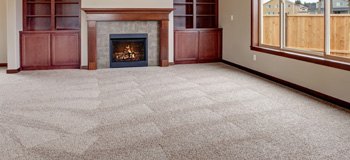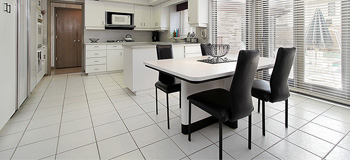Allergy Proof Your Home with Lovejoy Carpet Care
Dust mite remains are one of the worst sources of allergy symptoms in the home. Dust mites live in your bedding, your furniture, your drapery and your carpets. Proper cleaning plus special all-natural treatment will eliminate many of these dust mites and the allergy symptoms they cause.
Dust Mites: 10 Steps to Allergy-Proof Your Home:
Step 1 – Start With An Allergen-Control Plan:
1. Work with your regular doctor or clinic to find out which allergens affect your child or you the most. If asthma flares happen a lot, your doctor may suggest medication or life style changes. Keep an asthma diary.
2. Concentrate on controlling the allergens.
3. Start with the easiest, least expensive ways, like cleaning. Set up your cleaning plan one room at a time, beginning where the allergy-sufferer sleeps. For example:
- Wash bedding and curtains
- Dust and vacuum
- Have your carpet professionally cleaned and treated with Anti – Allergen Treatment – every six months
- Clean window sills and frames
- Wet mop hard surface floors
Step 2 – The Bedrooms
Every home has dust mites. You can’t see them but they are there. They feed on our skin flakes, as we shed about two pounds each year. We spend about a third of our lives in bed so most dustmites are in our pillows, bedding and bedroom carpets. You can control them by keeping bedding clean and controlling dust. Mites in the bedroom are a trigger for people with allergies and asthma.
Use special dust mite-proof covers to keep dust mites from getting into pillows. They are sometimes called “allergen-impermeable”. If you don’t use covers, wash pillows at least 1 time every two weeks in very hot water, and replace every year.
Mattresses should be cleaned every six months by a professional cleaner using an extraction method to reduce allergens. A professional cleaner can also apply a neutralizing spray to reduce allergen irritants between regular cleaning. Regular cleaning of carpets and upholstery should be part of your allergen-control plan.
Warmth + Moisture + Skin = Dust Mites
• Wash sheets weekly in hot water – treat once a month with Anti-Allergen rinse.
• Wash pillows at least once every 2 weeks (unless you use a mite proof cover).
• Wash blankets and comforters at least once monthly.
• Professionally clean mattresses at least every six months.
• Use room air filter devices.
Step 3 – Bathroom
Mold and mildew are tiny plants that grow where it’s warm and damp-like in the shower. They release invisible “spores” into the air. The floating spores trigger allergy and asthma episodes. And wherever they land, the spores start growing new mold.
Warmth + Moisture = Mold
Mold can also grow on appliances – like air conditioners, dehumidifiers and humidifiers. Follow manufacturer’s instructions to change filters and clean regularly.
To find products to remove or control mildew – read the label. Follow the manufacturer’s instructions for wearing protective equipment if required. You can use an antibacterial product two or three times a week to prevent mold from coming back.
• Clean shower stall and bathtubs weekly.
• Clean soap scum weekly as mildew grows on it.
• Wash shower curtains monthly.
• Wipe up water around tubs and showers daily.
• Wash towels and bathmats weekly.
Step 4 – Kitchen
Cockroaches are attracted to food and moisture – including crumbs, cooking grease and plain water. After dust mites, cockroaches are the second largest group of indoor allergens. It’s important to remove or tightly cover all food and water, especially at night when cockroaches are more active. Food + Water = Cockroaches
Cockroaches are often found around the refrigerator because of food spills and dampness. These spills and moisture also grow mold. Keeping your refrigerator clean is an important part of controlling allergens. Follow the cleaning instructions in your owner’s manual.
• Clean food and grease from stove daily.
• Clean up food spills, crumbs and liquids on counter tops and floors immediately.
• Empty trash daily.
• Clean the outside and inside of the refrigerator.
• Wash floors at least weekly.
• Keep food in closed containers.
• Use baits or gel products to get rid of cockroaches. Follow instructions on the product.
Step 5 – Living Areas
When children play and crawl on the floor, they breathe in allergens. Keep carpet, furniture and curtains as clean as possible. All home furnishings should be professionally cleaned on a regular basis. Cleaning frequency is based on the number of people in your home, if you have pets or smokers and the amount of outside dust and pollution.
When you vacuum, some of the allergens trapped in carpets and upholstery are thrown into the air. Whenever possible, have a non-allergic person do the vacuuming. Or, wear a dust mask and goggles if eye allergies are a problem.
Use a vacuum that has a HEPA (99.7% efficient) filter and/or exhaust filter; or use a special bag that holds allergens inside the bag. Vacuum at least once a week and more often if you have a pet. Empty the bag when it’s half full (or throw it away if it’s disposable). An upright vacuum or a canister with a powered head is best for carpet. An upright vacuum or canister vacuum with a powered nozzle is fine for cleaning upholstery, draperies, blinds and light dusting.
• Have carpets, upholstery, area rugs and mattresses professionally cleaned on a regular basis.
• Vacuum carpets at least once a week using a HEPA filter vacuum cleaner.
• Do not allow carpet to remain damp or wet for longer than 24 hours.
• Clean and dry window frames and sills regularly.
• Clean ceiling fans and light fixtures at least monthly.
• Use washable rugs at doors to catch dust, pollen and soil. Wash rugs monthly.
• Vacuum upholstered furniture regularly.
• Damp mop hard surface floors at least weekly.
* Dirty carpets and fabrics hold: Dust mites + pollens + animal dander = allergies
Step 6 – Air Handling System
Most homes and offices use a central heating, ventilation and air conditioning system (HVAC). Other homes may have central heating but use wall unit air conditioners. All heating and cooling systems should be cleaned on a regular basis.
Air duct systems can hold dust, pollen, animal dander, dust mite allergens and mold spores. Condensation in the air conditioning system, particularly during the summer, can collect and be a breeding ground for mold. Make sure system drip pans are cleaned and moisture is draining properly.
• Replacement filters should be changed monthly.
• Prevent moisture from accumulating in your HVAC system.
• Use filters over heating vents and change them regularly.
• Change system filters monthly.
• Make arrangements to have your system cleaned if never done in the past.
Step 7 – Cleaning Products
People who are very sensitive to certain chemicals should be certain to read the product contents on the label before purchasing harsh cleaning agents.
Don’t leave cleaning buckets where children or pets can get into them. Young children can drown in very small amounts of liquid. Large buckets are especially dangerous.
Never mix different cleaning products together. They can make dangerous fumes (like bleach and ammonia).
Store cleaning products out of the reach of young children and away from food.
Keep products in their original containers with their labels in place.
Read and follow label directions, different products work in different ways and can have different use instructions.
Keep the local poison control center number near your phone.
Do not use products with high amounts of VOC’s (volatile organic compounds).
Step 8 – The Clutter Plan
Want to save time and reduce allergens? Then get rid of clutter!
Having lots of stuff around does more than clutter a room. It makes cleaning harder and gives places for dust and other allergens to collect. Follow these simple steps to reduce clutter:
1. Sort It Out
Start with a bedroom and take everything out of the closet, dressers, shelves, and under the bed. Put stuff in separate piles: clothes, shoes, toys, books, school supplies, sports equipment, etc. Work with your children to pick the toys and belongings that are most important, and separate those they don’t use any more.
2. Give It A Home
Keep similar items together so that children know where to find things. For example, keep school supplies near the desk or table where your children do homework; store videos by the VCR; toys in the play area, etc.
3. Cover It
Put items inside drawers, closets, covered boxes or plastic containers so dust can’t collect on them. Put labels on containers to show where things belong. Have your children write or draw labels.
4. Use It
Review the “clutter plan” with your children. Remind them that controlling clutter may help reduce asthma attacks. Have them try to put one thing back before getting out something else. Or, schedule 5 minutes of clean-up time every night.
Step 9 – Water Incursion
The number one enemy of our homes is water. If you have water damage from broken pipes, leaks or rain coming into your home – it must be treated immediately! Steps need to be taken to dry the structure and its contents by a licensed and certified water damage contractor.
When walls, flooring, carpets or parts of your home stay wet for longer than 24 hours, mold and bacteria will grow. This can result in the release of severe allergens into your home. Mold produces my co toxins, which have the potential to produce toxic affects to our immune system and internal organs.
With moisture present, mold can grow on sheet rock, between walls of your home or under flooring. You may have a mold problem after a flood that is not first visible.
Do not delay in immediately contacting your insurance company whenever you have the unfortunate event of water damage.
• Keep the name and number of your insurance agent near your phone in the event of water damage.
• Contact a plumber to immediately stop the flow of water from a broken pipe.
• Turn off electricity at the main box before entering a room with standing water and electric appliances.
• Do not put newspapers on the floor to try to absorb water.
Step 10 – Cleaning with Allergies or Asthma
Since many allergens float in the air, they are hard to avoid. Cleaning (like dusting and vacuuming) can stir up the air and the allergens in it. Just like other particles in the air, sometimes cleaning products can “trigger” an asthma attack. But it’s still important to clean. If you don’t, dust, mold and other allergens will build up, making asthma symptoms worse.
If you have allergies or asthma, here are some important tips:
• Read and follow label directions on cleaning products.
• The label directions give the proper amount of product to use, how to use the product and any special safety advise.
• If you use spray products, spray the cleaner on a cloth or sponge first instead of on the surface.
• Break your cleaning into small tasks. Spread it out over several days instead of doing it all at once.
• Clean in a “well-ventilated” area – open a door and a window or turn on an exhaust fan. Leave the room when you are done cleaning and allow the room to air out.
• Try using cleaning products that have no scent or are perfume free. Try different products to find the ones that work best for you.
• If your asthma is severe, have someone else do the cleaning. Try to leave home when the cleaning is being done. If you must do the cleaning yourself, wear a mask. Have asthmatic children leave the room when cleaning is being done. Don’t ask children with asthma to dust or vacuum. Have them do other chores like washing dishes, taking out the trash, etc.
• Use cleaning products that are “green” or environmentally safe. Ones without hazardous ingredients including VOC’s.



